As an Amazon Associate I earn from qualifying purchases. This website also participates in other affiliate programs and may earn commissions if you shop through the links used on this website.
(This article was originally published on August 2, 2022 and was last updated on September 6, 2022)
While most of us have enjoyed the sweet smell and taste of fresh basil leaves before, it can still be difficult to describe exactly what does basil taste like?
And that’s just sweet basil – the kind many of us are familar with from Caprese Salads and trips to the supermarket.
What about all those exotic basil varieties out there – how would you describe their flavor?

Whether you’re working on a weird book report about basil, and you need some inspiration, you’re wondering what to do with the basil treasures in your herb garden, or you’re trying to figure out which distinct flavor to add to your next basil recipe, we’ve got you covered.
What does basil taste like, you ask? Well…it depends what kind of basil you’re talking about!
What Does Basil Taste Like?
The taste of basil is usually described using some combination of the following words: sweet, pepper, clove, anise and/or licorice flavor. As basil is a member of the mint family, it often has undertones of mint flavor, which is more or less noticeable depending on the type of basil you’re eating (I also find the stems are more minty than the leaves!)
However, there’s a huge range of aromas and flavors across the dozens and dozens of different types of basil you can grow and eat.
To start with, different types of basil vary in terms of the pungency of the flavor and aroma. Some varietals, such as Cinnamon basil or Cardinal basil, have a more intense taste than regular sweet basil. Whereas others, such as lettuce leaf, Tuscany basil and most purple basils (and the strangely named Red Rubin, which is actually a purple) have a more mild taste than Genovese basil you’d pick up in a standard North American or European supermarket.
Besides the degree of pungency and intensity, different types of basil cultivars have different, unique tastes. Lemon and lime basil, for example, have a spectacular citrus flavor and aroma reminiscent of the citrus fruits after which they’re named. Cinnamon basil has a unique cinnamon flavor.
Additionally, the taste of basil leaves change on the same plant, depending on where the plant is in its lifecycle. Generally, basil leaves taste bitter after they’ve bolted, or flowered and gone to seed. As basils are meant to be grown as annuals, you may find older plants that have been grown as perennials, and kept alive longer than a typical growing season, also develop a bitter taste to the leaves.
Finally, the taste of dried basil is different from the taste of fresh basil. Dried basil loses some of the anise flavor characteristic of fresh sweet basil, and the flavor profile diminishes over time.
What Do Basil Blooms or Basil Flowers Taste Like?
Basil flowers are edible, and as a general rule they have a similar flavor to the leaves of the plant, but with a milder flavor. Basil flowers make wonderful garnishes, can be thrown into vinegars, teas, and other infusions, and are a nice addition to pesto and uncooked meals (salads, wraps, sandwiches, etc).
What Do Different Types of Fresh Basil Taste Like?
Sweet Basil / Genovese Basil Flavor
Sweet basil, often used interchangeably with Genovese Basil, has a peppery taste with subtle anise or liquorice flavor. It works well in pretty much any dish that calls for basil, but really shines in Mediterranean dishes, and in particular Italian cuisine, such as Caprese salad, pesto, or on pizza. This is the type of basil you’re most likely to encounter in a supermarket in North America or Europe – you can buy a plant and harvest all summer long if you get the plant care right!
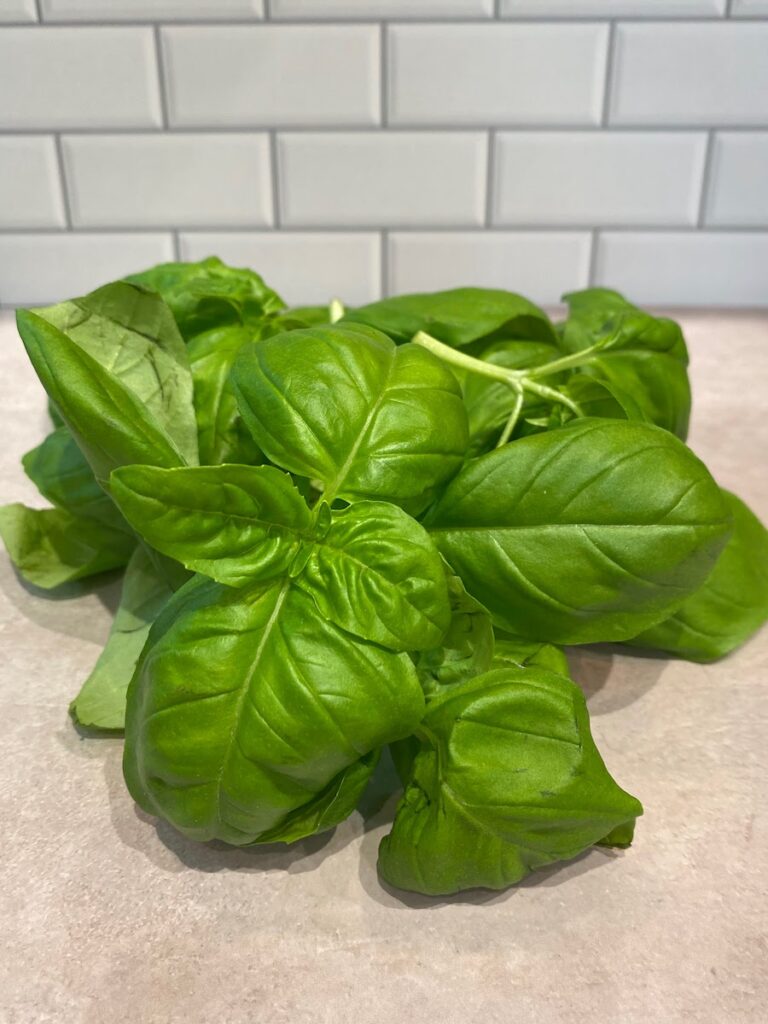
What Does Thai Basil Taste Like?
Thai basil has an anise or licorice taste that’s a mix of sweet and spicy. It works well with western inspired dishes for fusion recipes, but really shines in Southeast Asian cuisine like a Thai curry or Vietnamese pho dish. The plant itself tends to have purple stems (although I’ve definitely bought Thai basil in the supermarket that has green stems) and smaller, narrower leaves that are a bit jagged on the edges.
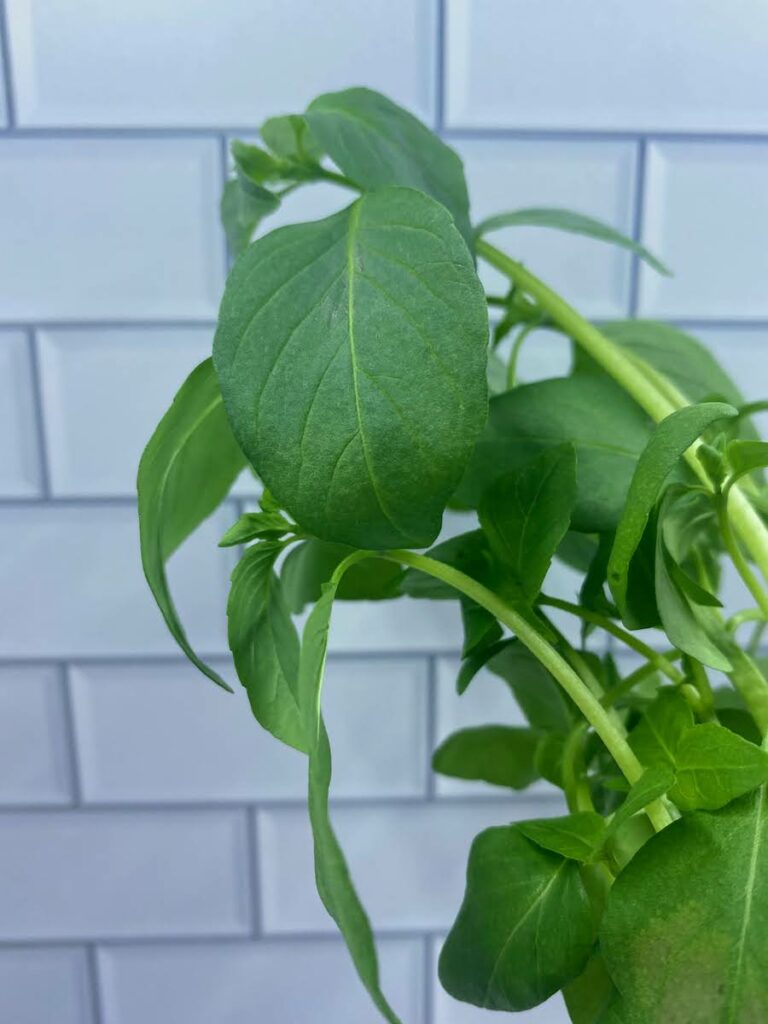
Lemon Basil and Lime Basil Tastes
Commonly used in southeast Asian cooking, lemon basil and lime basil have the same citrus zestiness as citrus fruits, combined with the herbaceousness of basil.
They can be used in recipes in lieu of adding actual lemons or limes to a recipe, and are good choices if you live in a temperate climate where you can’t grow lemon or lime trees, but still want to cook with homegrown ingredients.
Make either into a simple syrup or vinaigrette, infuse water, olive oil, or even alcohol with lime or lemon basil leaves, add a few chopped leaves to salads, or replace genovese basil with a lime or lemon basil in a typical basil recipe, such as caprese salads, pesto, creamy pasta, or chicken or fish.
Lemon and lime basil flavor also works well with sweet recipes, such as lemon basil or lime basil cookies, flavored sugar, or pancakes.
Skip the lemon juice or lemon zest, and give lemon basil a try for a zesty, super refreshing taste that’s still herbaceous.
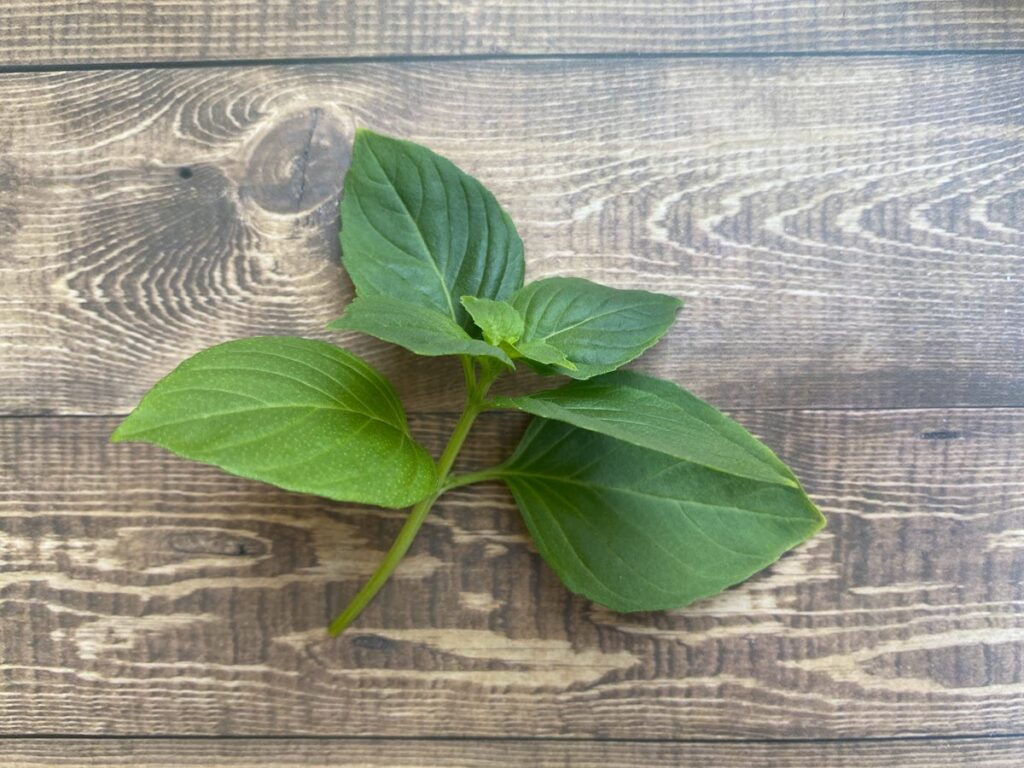
What Does Cinnamon Basil Taste Like?
Sometimes referred to as Mexican basil, Cinnamon basil has a spicier taste to it. If you get a whiff of cinnamon basil, you’ll get an idea of how it tastes, too. The aroma is somehow reminiscent of both cinnamon and basil, and the taste is a unique blend of both flavors. Cinnamon basil contains the compound methyl cinnamate, which cinnamon derives its cinnamoniness from!
Cinnamon basil works well in cocktails, tea, with fruit, and in salads. You can also experiment with it as a substitute for cinnamon, like in cookies.
Despite its alternative name of “Mexican Basil,” don’t expect to see Cinnamon Basil chicken tacos on the menu during your next trip to Puerto Vallarta – it’s mostly used for herbal medicine in Mexico, not cooking.
Be warned, it has an intense flavor compared to sweet basil, so if you’re adding it to a recipe, be conservative with quantities.
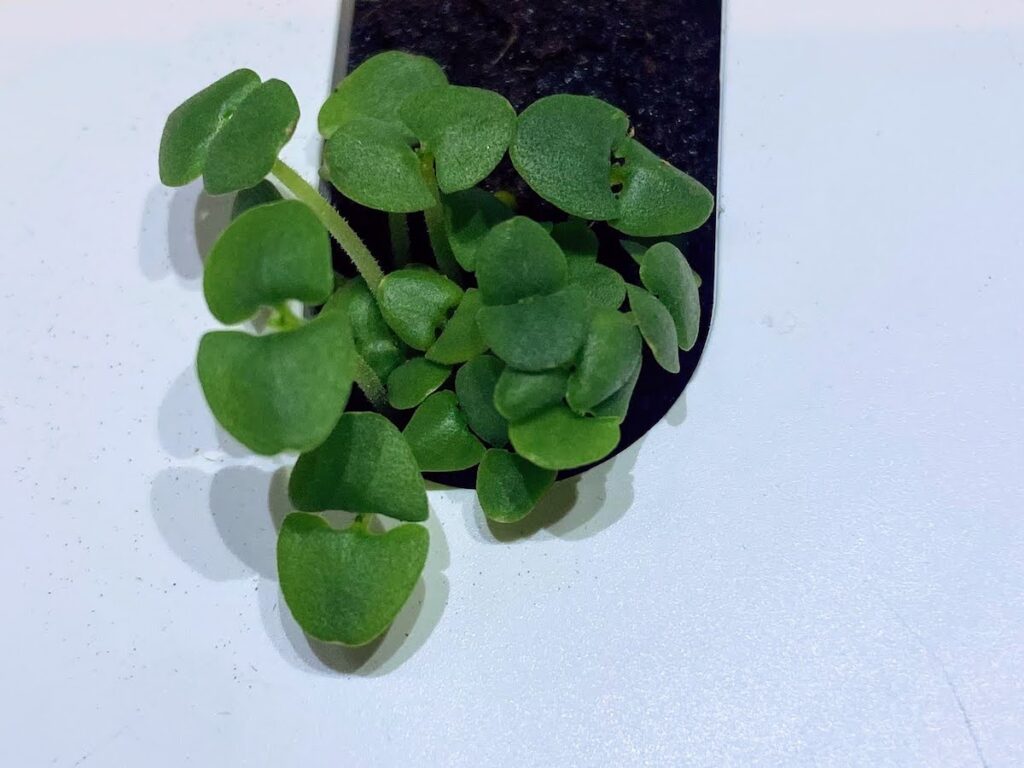
What Does Greek Basil Taste Like?
Aromatic Greek basil has a unique but intense sweet and spicy flavor that has hints of mint and anise, with a clove and unique peppery taste. Greek basil is sometimes also known as Dwarf basil, and it can be used in both savory and sweet dishes. It pairs well with tomatoes, garlic, onions, and lemon. Not surprisingly, you can also pair it with typically Greek ingredients, like feta or Kalamata olives.

What Does Marseille Basil (French Basil) Taste Like?
Marseille basil, sometimes called French basil, is often used in France to make pistou, which is similar to a nut-free pesto made with or without cheese. Smaller and more compact than sweet basil, Marseille basil packs a flavor and aromatic punch. Generally speaking, its flavor is similar to Genovese or regular sweet basil, but more intense and pungent.
What Does Lettuce Basil Taste Like?
Lettuce leaf basil is a sweet basil, with massive crinkly leaves and a milder, less pungent flavor than your typical supermarket basil. This type of basil tastes more or less like a lite version of Genovese or sweet basil, with the same overall flavor profile, but it’s slightly less herbaceous and intense.
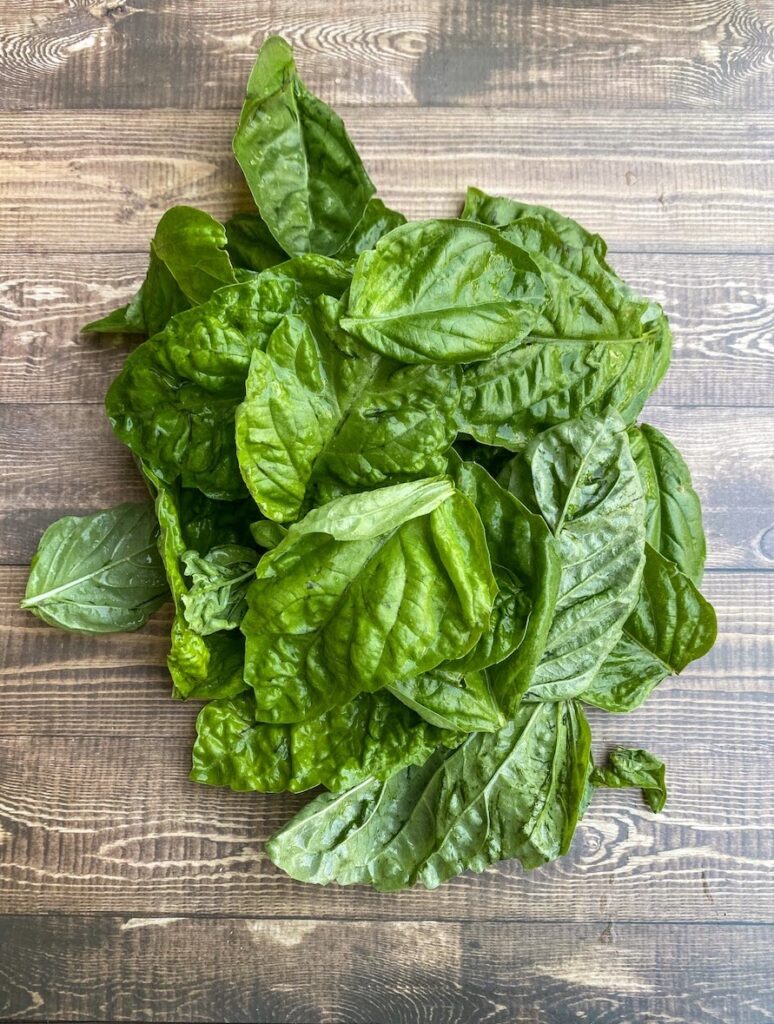
A lettuce leaf caprese salad with balsamic glaze is an easy way to enjoy your lettuce leaf basil, as are adding it to wraps, torn up or chiffonaded in salads, or to replace lettuce leaves on a burger.
Guinea pigs and rabbits seem to love the flavor and texture of this type of basil!
What Does Green Ruffles Basil Taste Like?
Green ruffles is a variety of lettuce leaf basil, with long, oval or oblong leaves that are ruffled or curled along the edges. As with other lettuce leaf basils, it has a milder flavor when compared to Genvoese – kind of like a sweet basil, lite. Add it to salads, sandwiches, and pasta.
What Does Blue Spice Basil Taste Like?
Blue spice basil is one of those “love it or hate it” scents and flavors.
Probably the most fragrant varietals of basil, it has an intense aroma with notes of clove spice, citrusy floral, sweet vanilla, and even bubble gum! Along with a strong aroma comes a robust flavor that works especially well in teas, basil simple syrup or infused oil, in a basil water infusion with other herbs (try a lavender, mint, and blue spice basil water infusion), and whenever a cocktail recipe calls for muddled basil or a basil leaf drink topper.
Some gardeners have noted Blue Spice Basil has a similar taste as Ethopian basil (besobela), and can replace besobela in Ethiopian stews and spiced butter. However, it’s different from the camphor aroma of African Blue Basil.
Because of the sweet vanilla overtones, this basil variety also works well to make basil sugar, and basil syrup, as well as with baked fruits, fruit breads, pancakes, and crumbles.
When tasting blue spice basil, rub the leaves between your fingers and wash before eating to get rid of the little hairs.
What Does Persian Basil Taste Like?
Persian basil, known as Reyhan in Iran, has a complex, bright flavor and aroma of spiced citrus. Compared to some other basils, the aroma isn’t particularly strong, and it has a complex but light flavor.
The medium-sized leaves work are good in sandwiches, salads and wraps, served up as fresh leaves with feta and walnuts, and go well with cucumber, tomatoes, and watermelon. You can also add Persian basil to cooked dishes, such as Middle Eastern inspired rice dishes, soups, and meats.
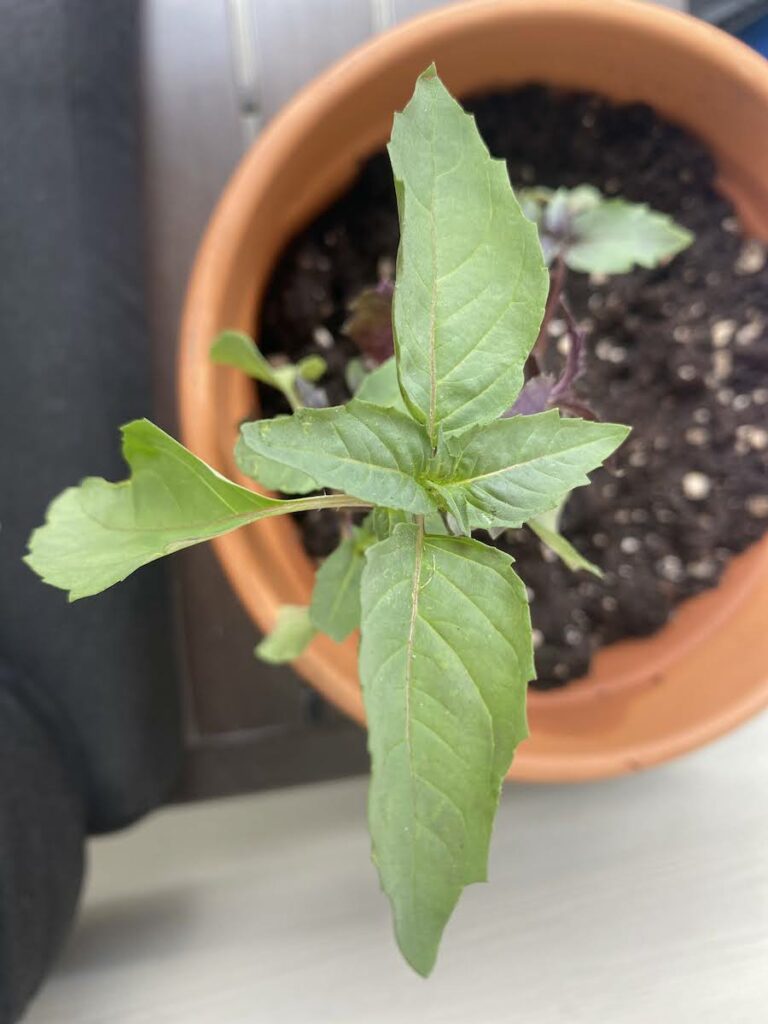
What Does Dark Purple Opal Basil Taste Like?
Purple Opal basil is beautiful and fragrant basil varietal. It has a milder, earthier flavor than Genovese basil, with a gentle spiciness containing notes of cinnamon, clove, mint, ginger, and very light anise.
Purple basil fans who appreciate the mellower flavor of the purples will likely enjoy Dark Purple Opal basil for the same reason.
Add fresh leaves to pasta, salads, wraps, burgers, sandwiches, pizza, and drinks (lemonade, cocktails). It makes a gorgeous Caprese salad and beautiful pesto, too, but isn’t great for cooking for longer periods of time. Like other purple basils, the color changes to a black or grey when cooked, which doesn’t look very appetizing.
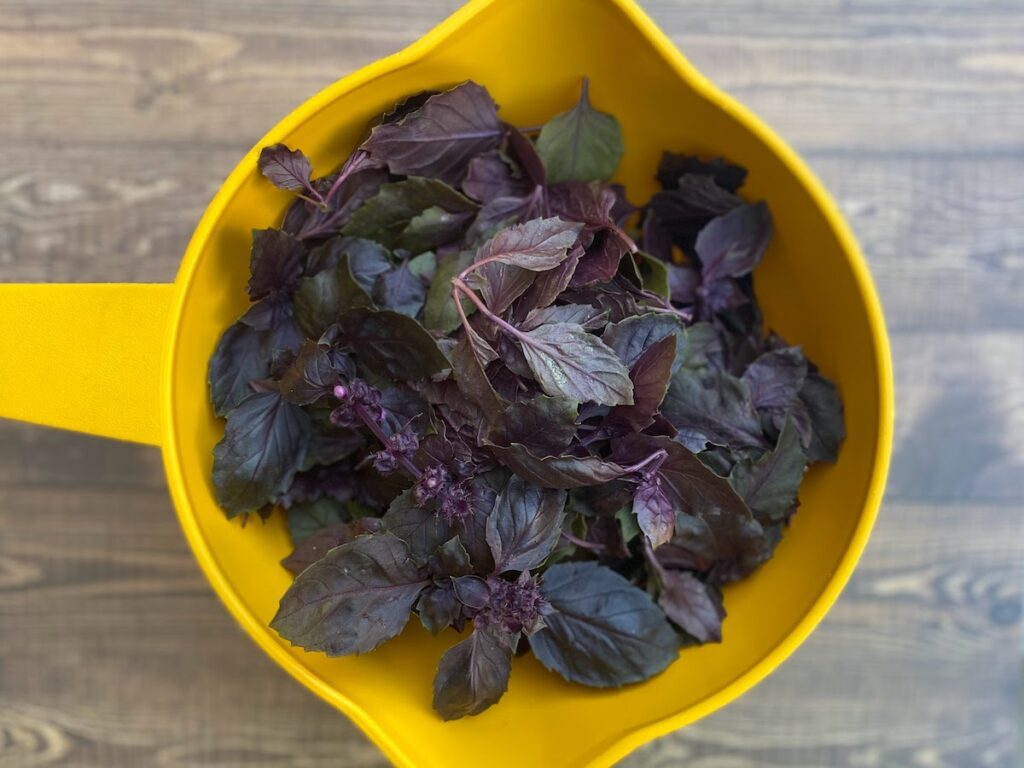
What Does Amethyst Basil Taste Like?
Amethyst basil is another type of purple basil that tastes fairly similar to Genovese basil – a mix of sweet and anise. As with Purple Opal Basil, it doesn’t do as well in cooked dishes, as the leaves turn black or an unappealing grey. Amethyst basil is best used fresh, such as in salads.
What Does Cardinal Basil Taste Like?
Cardinal basil is one of the spicier basils, so use with caution. Spicier than Cinnamon basil it has the same characteristic anise flavor, with more notes of clove. Cardinal basil plants have beautiful, edible flowers, but the fresh basil leaves do tend to turn bitter after a plant has been allowed to flower. If you plan on using your cardinal basil plant for culinary purposes, pinch off flowers as soon as you see them.
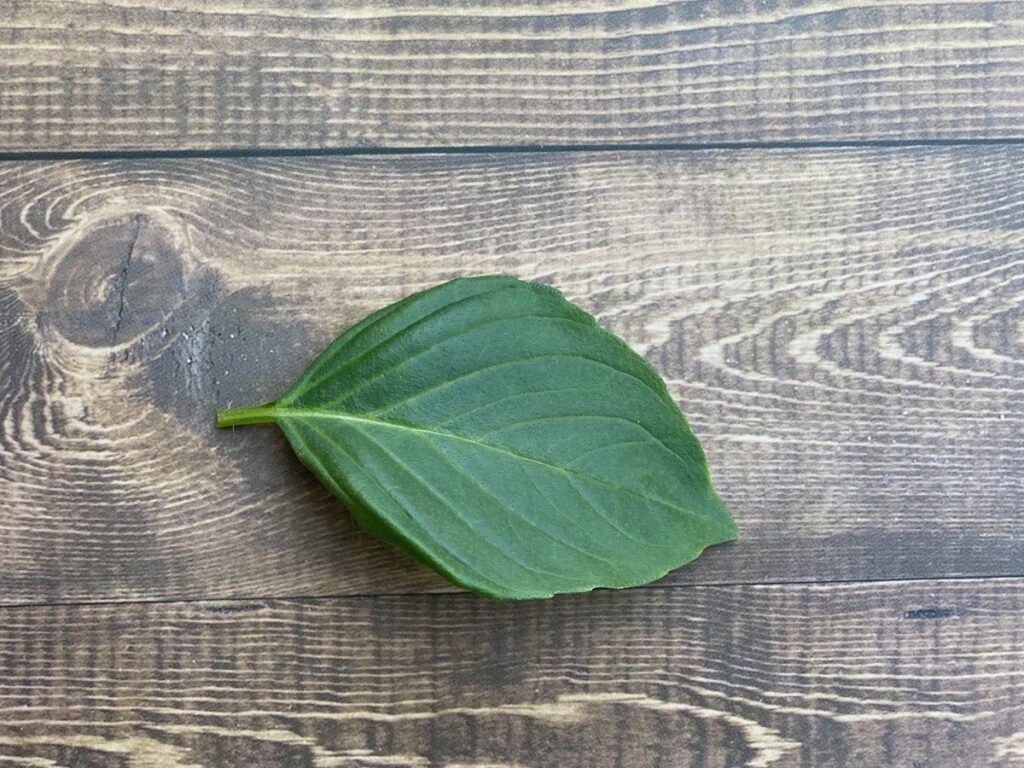
As with most basils, Cardinal basil’s flavor is best when it hasn’t cooked for long, so eat fresh or add towards the end of the cooking process in curries and soups. Cooking a bit will mellow out the spiciness. If you have some cardinal basil in your garden or in your farm box, you can try it with Mediterranean or Asian cuisines. Again, be sure to adjust quantities if you’re trying it with a recipe that calls for sweet basil.
What Does Holy Basil Taste Like?
Revered as the King of Basil, this royal basil (also known as Tulsi basil) is mainly used for medicinal purposes, rather than culinary purposes, but you can still experiment with it in some recipes.
Highly fragrant and aromatic, Tusli has notes of warm tropical fruits, peppercorns, anise or licorice, cloves, mint, and citrus. It has a lot going on!
Add fresh or dried Tulsi basil to a tea, either alone or combined with mint or chamomile, or make a basil infused vinegar from the leaves or blossoms. You can also add in Tulsi leaves to your smoothies.
What About Basil Texture?
Fresh basil leaves are thin and soft to the touch. They tear easily, and bruise easily as well, turning black from rough use of the knife, too much agitation, or from being in the fridge.
In my experience, different types of basil have slightly different textures, with some basil leaves (i.e. lettuce leaf) being more substantial and crunchy, and other types of leaves (Mrs. Burns Lemon, Persian Basil) being more delicate, thin and soft.
Dried basil is crunchy before being added to a dish.
What is the Best Tasting Basil?
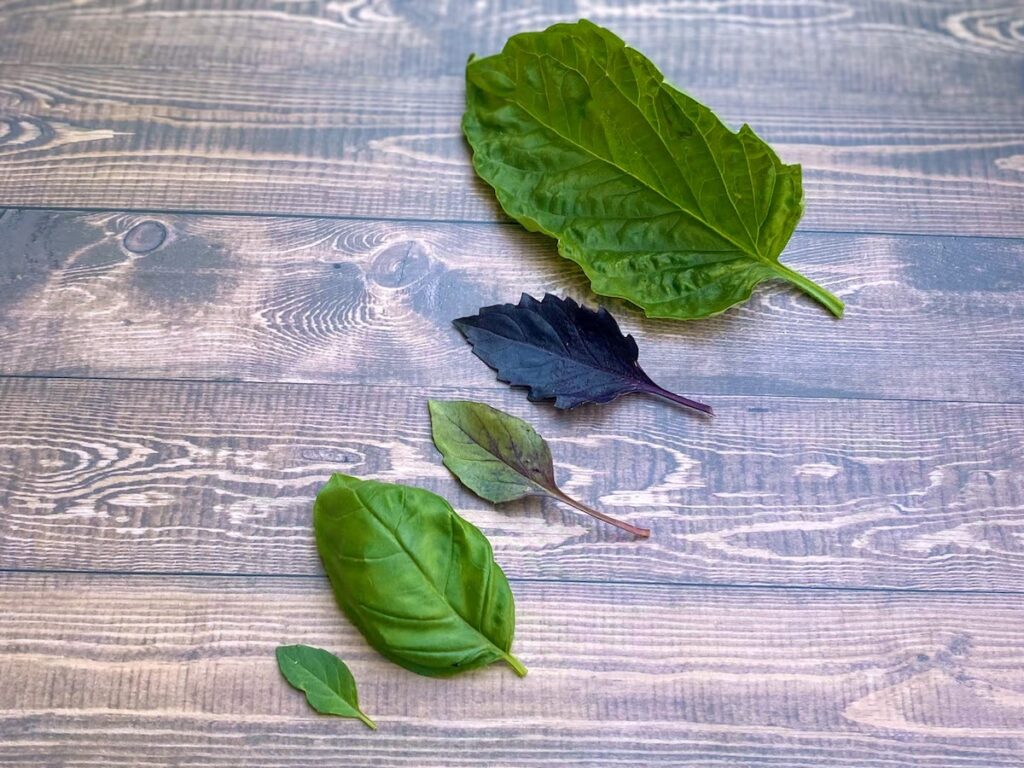
In North America and Europe, Sweet Basil (Genovese basil) and Thai Basil are the most commonly used basils for culinary purposes. However, there are dozens of other delicious basil varieties, depending on what you’re cooking or making. If you consider yourself a green thumb, try growing some different basils from seed, so you can add them to your kitchen rotation: Tuscany basil (Lettuce Leaf), lemon and lime basil, cinnamon basil, Greek basil, and purple basils are great options for culinary use. If you don’t consider yourself a green thumb, consider growing in a smart garden like a Click and Grow or Aerogarden for tons of basil on easy mode!
